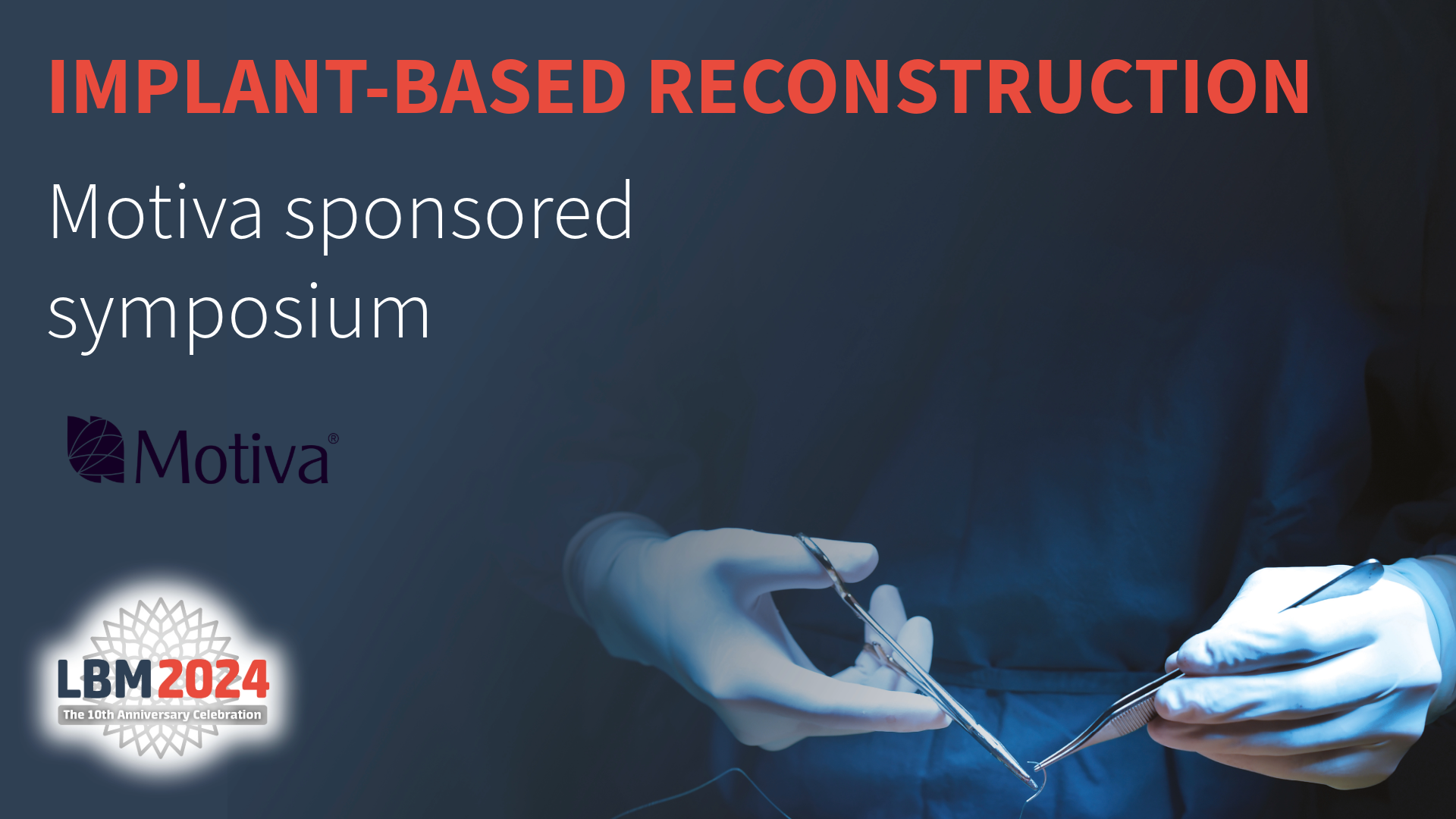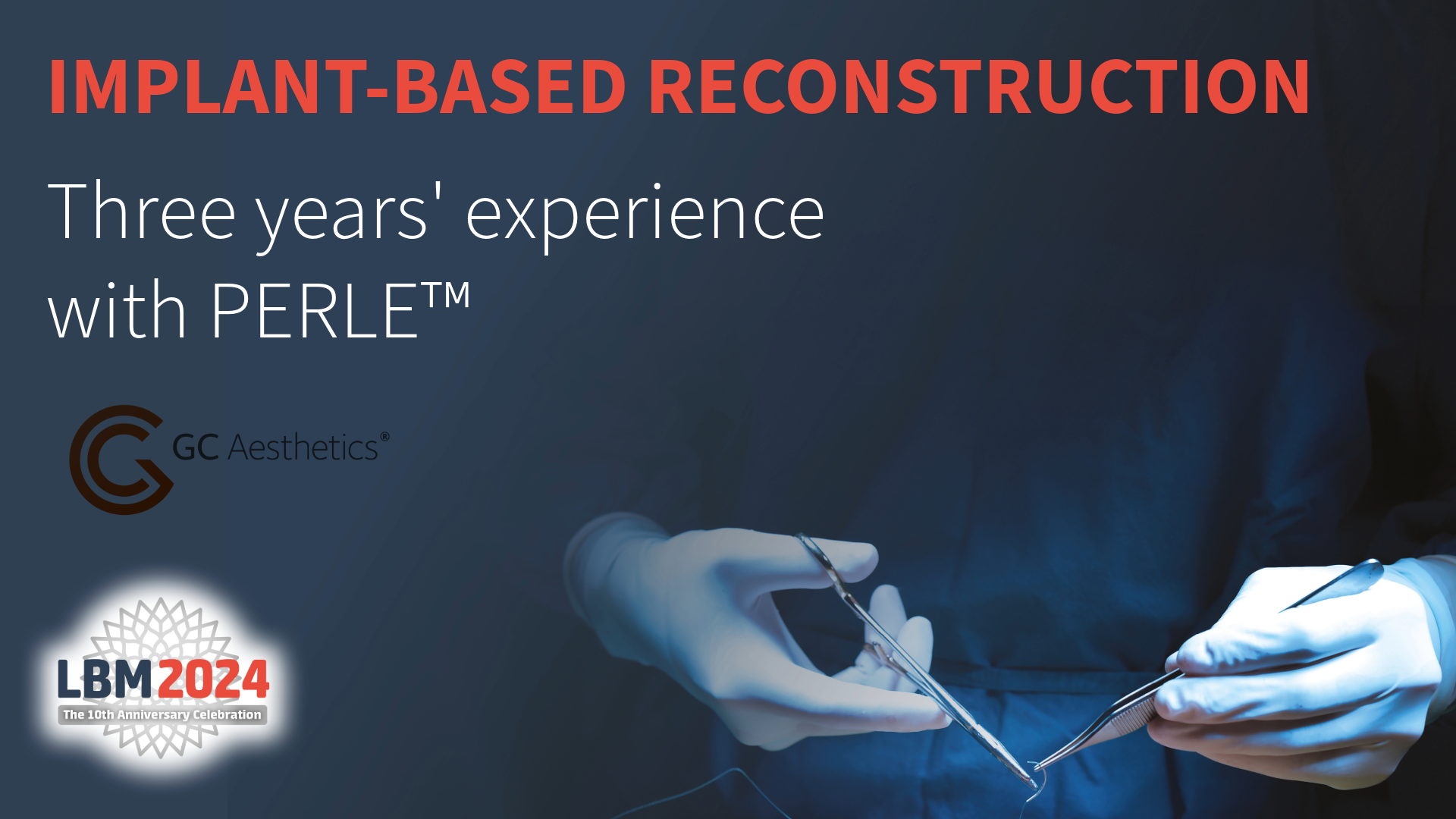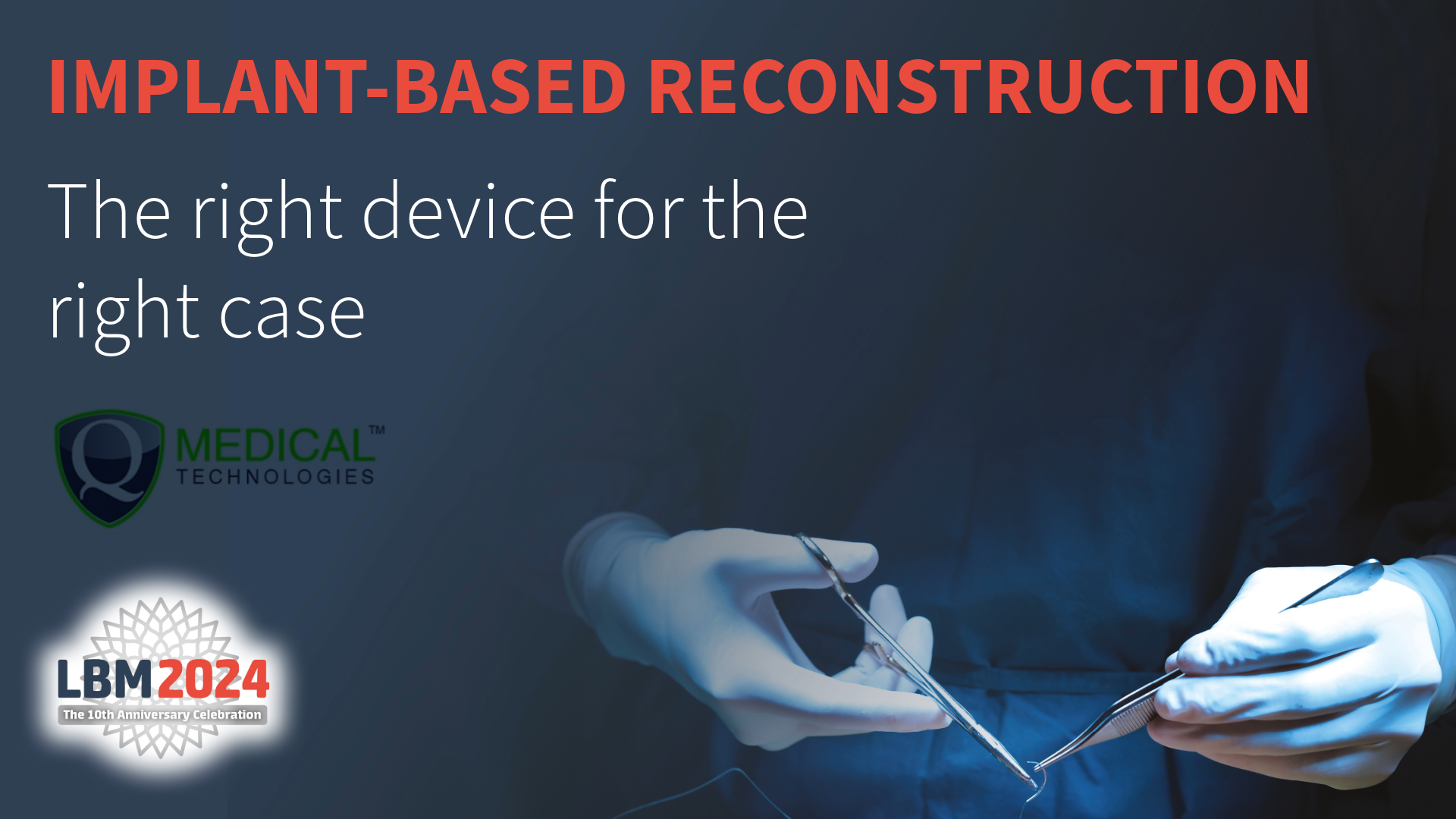Hello, everyone.
Uh thank you very much to be here to, uh, join this, uh,
sponsored symposium.
As you know, this is a sponsored symposium, so I get the honorarium for that,
but I was completely free to. To analyse the data to um present uh
uh results of endoscopic nipple sparing mastectomy also because I'm a general surgeon,
a breast surgeon, oncologic surgeon, and I perform this procedure in my,
in my unit. Um, is it feasible, uh, because many of you
maybe have never seen a kind of, uh, a kind of endoscopic minimally invasive surgery.
Uh, the patient is a breast cancer patient, can be a prophylactic patient,
and we use this kind of position, uh, because we want to avoid some conflicts between
the instruments and the arm of the patients.
The incision is in the axilla. It is possible to proceed with an anterior
axillary line incision or a media medial anterior line position or uh
posterior axillary line incision, but also um very near to.
The inframammary fold always in the incision. From this incision,
it is possible also to manage the sentinel node biopsy that you can perform with blue
with technesium according to your usual technique.
From this incision, it's possible to dissect the anterior mastectomy flap.
Um, uh, area before, before the endoscopic, uh, part of the operation,
it is possible to dissect the posterior part and we create some,
uh, uh, some tunnels after the tumour sense with adrenaline and,
uh, saline solution. To let the gas to go in the in the
mastectomy under the skin in the mastectomy flap.
This kind of operation is feasible with the gas according to the use of a single port which is.
Um, which is studied, uh, to, uh, create, uh, uh, a virtual cavity that usually naturally is
not present in the breast.
When you introduce the camera, the vision is incredible because you can see the mastectomy
flap, you can see the, um, the crest of dure. You can see very clear the uh mastectomy
flap, and you can start your dissection.
You leave your. Glands going away and you leave a very good
homogeneous mastectomy flap respecting the subcutaneous
vessels, arteries and and veins, and when you arrive in the polola
complex area, it's also very clear, much more clear than in open.
You can see the ducts and you can see your plan of dissection.
And uh when you complete the dissection you can remove the glands with the uh leaving there the
monoport to avoid some contacts between uh.
The diseased gland and uh and the and the and the uh the skin
and you can choose your kind of reconstruction. This patient underwent to a pre-pectoral
reconstruction with polyal implant, but you can see also,
you can use also a retropectoral implant reconstruction, but you can use also autologous
tissue reconstruction if you are accustomed to do that.
So, uh, it is feasible, we know it, but, uh, um, we have to
define why we are using this kind of technique instead of classical open nipple sparing
mastectomy. So we have to define the target population for
this uh. Uh, surgery we have to define if it is uh
surgically safe, uh, in terms of postoperative complication we have to define if
is safe from the oncological point of view and we have to define the quality of life after
operation and cosmetic outcome respect to clinic to classical nipple sparing mastectomy.
So, uh, we conducted, um, uh comparative review and meta-analysis.
We discovered that there are two kinds of uh.
Uh, way of performing nipple endoscopic nipple perioasstectomy.
One is very old and it is not used anymore, and it is the one with the multiple port and troca
with the multiple incision and periaal incision and one with the use of the port in the
axilla, uh, to, uh, uh, to let the use of uh CO2 to pump up
the, the, the subcutaneous area.
So, um, we found 12 state of the art level one
evidence papers describing the classical nipple sparing mastectomy and we compare them
with the 75 relevant publications.
Um, of, uh, uh, uh, describing the endoscopic nipples bearing mastectomy of these,
uh, studies for, uh, were of level one evidence.
One was level 2 evidence, and I have to say the majority was of level 3 and
4 and uh the um this study described 36 studies with a total of
2600 endoscopic nipple perio mastectomy patients.
That were included in the proportional meta-analysis and described um 10 studies with
a total of 656 patients uh underwent endoscopic nippoper mastectomy in the pair
pairwise uh meta-analysis. So patients are very,
the, the, the um the number of patients is very high.
Uh, in terms of target population, this meta-analysis described a patient with breast
cancer or high risk patient that underwent to.
Uh, um, therapeutic or risk reducing surgery, patients who want,
of course, immediate breast reconstruction and patient with CAP A from A to D uh breast
size, and patients with low moderate doses. If not,
of course, they are candidates for totally different surgery like uh skin reduces nipple
sparing mastectomy.
Of course, uh, in this study we're excluded all the patients with a high risk of,
uh, of, uh, of necrosis like a patient underwent already to radiation therapy,
a patient with a very big uh uh breast or, or, um, uh,
you know, previous scar on the breast. So you saved the scar,
but the patient may already have a scar, so this kind of patients were excluded.
And in terms of surgical safety, a weighted mean difference of operative,
uh, of operative time of 43 minutes, um, uh, uh, was,
uh, uh, described for endoscopic nipple.
So tomorrow if you want to start with the endoscopic nipposparing mastectomy,
uh, uh, take it in, in uh in uh in your mind that you will employ such a 40 from 40 to
60 minutes more than a classical nipple sparing mastectomy.
In the comparative studies that were analysed, uh, this is an important result.
The um, women underwent endoscopic poster mastectomy has a significantly lower pain,
uh, postoperative pain in day one and day 2 after endoscopic popering mastectomy respected
to clinic to classically nposperic mastectomy.
And this is important and in terms of overall complications, there were no differences
between these two techniques, classical and endoscopic.
It means that it is safe.
Of course if you want to reduce the complication of such operation with very low
proportional rate of complication.
You want, you want, uh, you want to succeed because the complication of classical pospheric
mastectomy are very few, but we can say that endoscopic is safe also in terms of blood loss.
There were no differences in terms of blood loss between the two techniques,
but. If you consider the modern endoscopic
nipposparing mastectomy, the one with the axillary incision,
the one with monopport uh use of CO and the use of CO2,
you can see that um there is a significant reduction in odds of necrosis
following endoscopic nipplesparing mastectomy.
This kind of necrosis is described as. In general,
so the, um, uh, so the, the mastectomy flap and the complex,
uh, necrosis.
And, uh, we have to say also that there are no differences in terms of loss of implant between
the two techniques.
Uh, this is a, um, a paper published 20 days ago on,
uh, JAMA surgery described, uh, a very, uh, a retrospective multicenter cohort study
involving 1500 patients with breast cancer in 21 university hospital
in Korea where the surgery is, uh, particularly, um, uh,
um, how can I say, uh, developed and. This study enrolled
11,356
individuals undergoing a classical poseric mastectomy compared with 227
endoscopic mastectomy.
And this kind of patients were mixed endoscopic and robotic,
but with the same incision and with the use of the same gas,
and the results were impressive. After 90 days,
the nipperla complex necrosis was more common in the long term after classical nipple sparing
mastectomy than in a minimally invasive mastectomy.
So it confirmed that necrosis is less present, is less frequent in endoscopic settings than
in classical settings. And also the postoperative seroma occurred more
frequently in classical nipposparic mastectomy.
And the use of a mid axillary, anterior axillary and axillary in general incision was
associated with a lower risk of necrosis in the breast.
And this is one of the main points of this technique, and it is important.
Unfortunately, wound infection occurred more frequently in the minimally invasive surgery,
but without differences in the in terms of loss of implant,
it means that the incision off of the breast can be managed better during infection of the
of the of the wound.
In terms of oncological safety, of course there won't be a difference I think but also
that confirmed that after um after um the uh the
pathological analysis there were no differences in terms of uh positivity of margin after the
operation but also this is a surrogate of oncological outcome but also in terms of
oncological outcome.
The local recurrence was after 52 months, the median follow up of 52 months.
There were no differences in terms of local recurrences between two groups of distant
metastases between the two groups and breast cancer specific mortality to confirm that of
course endoscopic.
Perio mastectomy can be a tool to be used to perform endoscopy to perform sparing mastectomy
and nothing change in terms of oncological outcome.
So what is the heart of the of the of the topic, the quality of life and cosmetic
outcome if we consider.
That uh the majority of patients underwent to uh classical nipposparing mastectomy with
the use of inframammary fold, which is the most used in the world,
in the United States, in Europe, and also in Korea where uh many data comes from.
Uh, and this, uh, uh, inframammary fold incision were compared to,
uh, the endoscopic sparing mastectomy and of course this is important when you consider,
um, the change of incision you have to consider that the bigger group was the group that we
always use the inframammary fold incision for breast uh for breast nipple sparing mastectomy
and if we consider. The comparative study that have measured
the satisfaction of patients with the breast cue, we can see that considering that mass
publication report had no significant differences in in patient
demographics, in patient type of reconstruction and the type of incision.
Uh, between the two groups can have a statistically significant more satisfaction in
patients underwent to endoscopic nipple sparing mastectomy.
If you consider.
Uh, uh, the, the comparative study that I have the only patient that underwent to uh
implant reconstruction also, uh, the, uh, cosmetic, uh,
all out, um, the cosmetic outcome was better in favour of endoscopic nipposparing mastectomy.
Uh, which is the, what is the reason why the patients are more satisfied?
They report, the patient reports that the satisfaction was uh because of shorter incision
respect to the classical one and the hidden scar, which is not visible in front of the
patient in the mirror when the patient see each uh herself in the mirror.
So these are some examples of endoscopic nipple perio mastectomy.
You can, uh, uh, this is an example of prepectoral reconstruction.
Um, what is good is that, uh, this patient you can see.
Here have some effect. This is preoperatively,
but with the endoscopicic posteromastectomy you can preserve the defect,
the original defect of the patient and the majority of patients are happy with that.
That you give them the same breast they had before the operation even if they have some
defects and this is the uh importance of this kind of uh of this kind of techniques.
These are 2 weeks later, 3 months later, 6 months later sometimes you can see the scar of
course this picture uh with the patient with the arm,
uh, put in a posterior position to show the incision, but.
And you have a very high impact on cosmetics in this in this kind of surgery.
Unfortunately, the majority of uh trials and the studies considered in this
meta-analysis did not consider the sensitivity of npolara complex.
So the sensitivity of npo complex is reported in very few studies.
In some studies, uh, we can find that endoscopics.
Is, uh, um, have not a favourable outcome respect to classical nipple sparing mastectomy.
In other studies is exactly the opposite.
Uh, what is the meaning of these results is that we have to con uh,
to start to consider to, uh, um, to measure the nipple or complex sensitivity after our,
uh, uh, uh, clinical trials, and we will do that in the future.
So of course, if you want to start and you need the training,
of course you need the endoscopic equipment, but usually you can find it in all the
hospitals. Uh, the equipment is the equipment they use for
general surgery, gynaecology, for other kind of uh laparoscopic or endoscopic surgery.
And of course, you will have a learning curve. But today,
if you want. You can have a sort of training programme.
Um, you can have the opportunity to do uh ORK observation.
You can, uh, have, uh, uh, some endoscopic mastectomy training videos.
You can learn from videos. You can, uh, uh, you will have,
because we are working on it, uh, endoscopic mastectomy guide,
uh, that you can study at home watching TV and you can study the technique of endoscopic
mastectomy. And there are some courses, some cadaver lab
that you can, uh, that you can follow and uh put your hands on to start and to know how to,
uh to proceed with this procedure.
Of course there are some ongoing trials you can find everything in clinicaltrial.gov and uh
the uh most important trial I think in the world at the moment is the one always from
Korea. That compare conventional to endoscopic to
robotics and uh they are enrolling patients very fast because there are many,
many hospitals to do that.
I have also in my hospital in Italy a small trial open for that and of course we are
evaluating also the nipla complex sensitivity after uh classical and uh robotic
and endoscopic mastectomy, and we will have results very few.
So concluding concluding endoscopic can be an optional tool to offer to selected
patient population of course it's not for everyone as always uh um
surgical indication are very particular and must be personalised,
and you have to choose the correct technique for the correct patient,
the correct indication.
As everyone in this, uh, in this, uh, Congress say today,
the, the, uh, you have to choose the correct, uh, the correct,
uh technique for the correct patient.
Quality of life and cosmetic outcome is the key point of this procedure.
You do it for that reason, not because you want to have a better result in oncological outcome.
Maybe you can do it to have a better result in terms of nippolo complex.
Necrosis in the postoperative settings, but especially for quality of life results and
patients undergoing endoscopic postperio mastectomy have a significantly greater odds of
satisfactory cosmetic results and you have to keep it in mind.
And uh there are no significant uh reduction in uh oncological outcome
and, uh, so you just need to start with the training programme.
If you want, you can ask and uh you can, you can come to a to a booth in the coffee area to
ask for information about this and um.
Uh, there, there is no, no time for question. There is,
is, it is not, uh, um, last year I was here to, to talk,
uh, about robotic mastectomy.
Uh, many of you know me because, uh, I'm the expert of robotics.
And, uh, uh, today, uh, my problem is that, uh, uh, when I have a patient,
I don't know what to choose, you know, between robotics and endoscopics.
Uh, of course I choose one of the minimally invasive surgery.
Of course I have to remember that costs are important and uh I'm,
I'm a very lucky guy because I have the robot, but the majority of hospital doesn't have it.
The majority of uh private clinics doesn't have robots so they can choose endoscopic
mastectomy with the same results of uh minimally invasive surgery.
Thank you very much. Thank you.
Sponsored symposium: Endoscopic NSM, techniques and clinical evidence review
27 September 2024
This symposium from day two of the London Breast Meeting 2024 is sponsored by Applied Medical and looks at endoscopic nipple-sparing mastectomy: techniques and clinical evidence review.
This symposium from day two of the London Breast Meeting 2024 is sponsored by Applied Medical and looks at endoscopic nipple-sparing mastectomy: techniques and clinical evidence review.
The session is presented by Antonio Toesca.
International, CPD certified conference that assembles some of the world’s most highly respected professionals working in the field of aesthetic and reconstructive breast surgery today.




